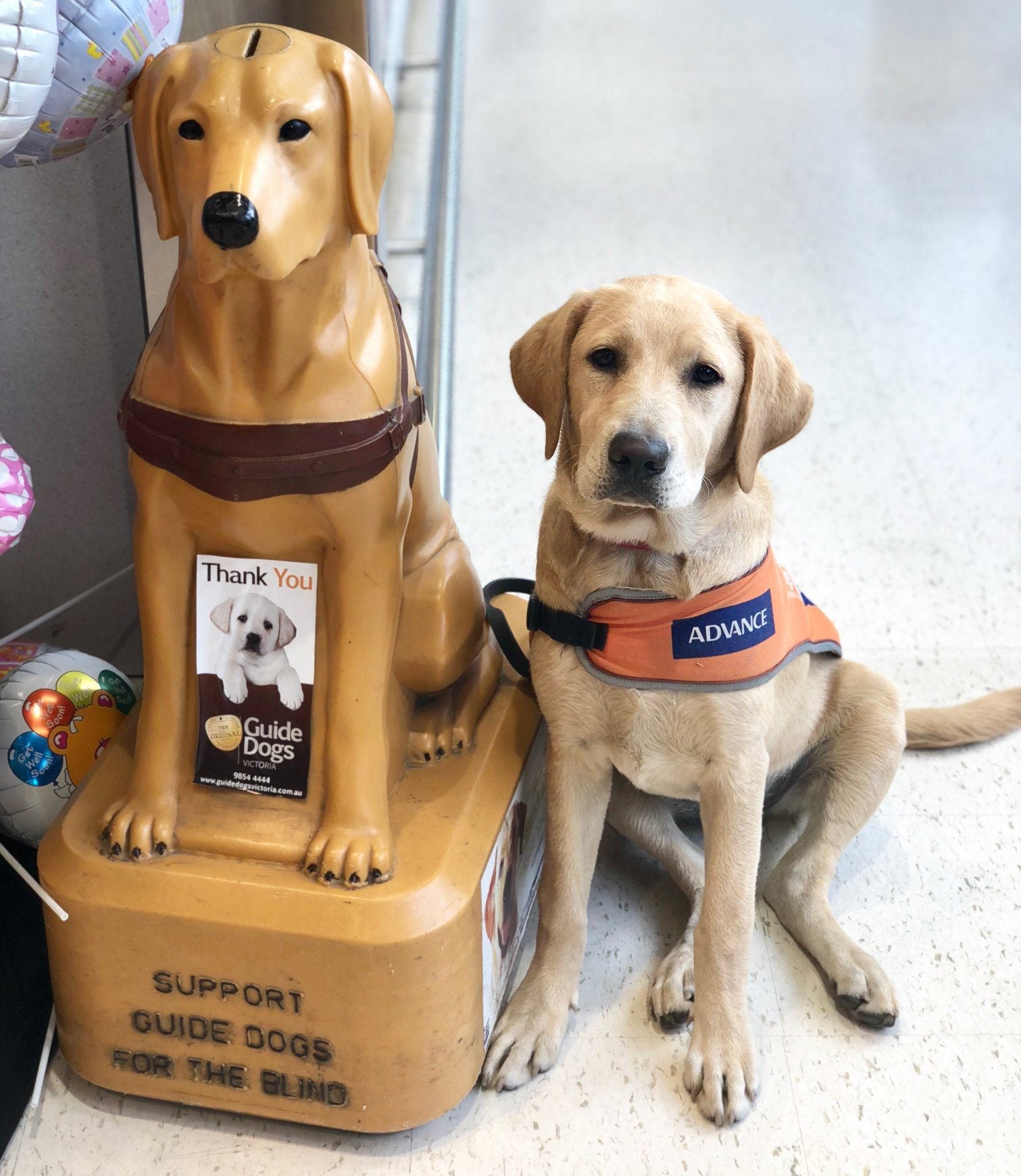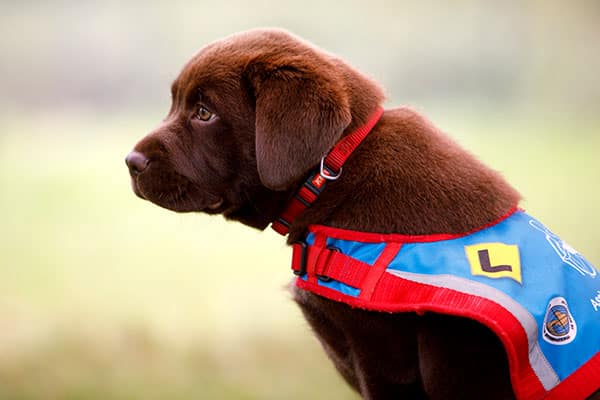AFTERPAY NOW AVAILABLE | CHRISTMAS SALES 30% OFF STORE WIDE - CODE "XMAS30"
AFTERPAY NOW AVAILABLE | CHRISTMAS SALES 30% OFF STORE WIDE - CODE "XMAS30"

We often see partnerships with animals as us taking care of them. But, in reality, this relationship has always been a two-way street. Dogs, cats, and other animals can take care of us too. This is especially true for assistance animals.
Isn’t it heartwarming to see them proudly wearing their dog harness and leash, helping their handlers cross streets or open doors?
It is, and it would have been truly wonderful if all individuals with disabilities could access such services. Unfortunately, reality isn’t as kind and accommodating as we want it to be.
1 in 6 Australians have a disability, or an 18% disability prevalence. But only a few get to have lovely assistance animals in their lives. Apart from restrictions in criteria, training and owning one can be very expensive.
Training an assistance dog costs up to $60000, and taking care of them costs $500 to $10000 annually. These expenses cover the dog’s food, checkups, vaccinations, accessories, and training.
This is when NDIS becomes handy.
The National Disability Insurance Scheme (NDIS) is Australia’s national funding program supporting people with disabilities in gaining more independence, developing skills, connecting with the community, and improving their quality of life.
Specifically, NDIS covers the costs of services, products, and equipment designed to make the goals and aspirations of people with disabilities possible, ensuring a more inclusive community life in the Land Down Under.
Today, NDIS supports over 500,000 Australians—a significant number, but still a long way to go before reaching the 4.3 million Australians with disabilities.
It sounds promising, but how do I apply? Am I eligible?
NDIS enforces specific eligibility requirements to ensure you’re qualified to receive support. These are:
Remember, these are just guidelines. Connect with the nearest NDIS offices and contacts to verify your eligibility, process your application, and explore other options.

Source: Developing Australian Communities
Generally, NDIS funds support related to a person’s disability. Among these is having assistance animals. But what exactly are assistance animals?
Assistance animal (99% of which are dogs) is an umbrella term for animals specially trained to provide support for people with disabilities. Unlike regular pets, assistance animals perform tasks easing disability, can pass the Public Access Test (PAT), and fall under the following legal definitions (Disability Discrimination Act 1992,Section 9):
Upon verification of its capacity to assist, all assistance animals must be given access to public places even without registration, as emphasised by the Companion Animals Act 1998. But officers in charge of public places and transportation are entitled to request reasonable proof proving the authenticity of your assistance animal.
While assistance animals greatly aid people with disabilities in their daily lives, their limited accessibility is mainly due to the associated costs, which NDIS Assistance Animals can help with.
NDIS covers only certain types of assistance animals, including:
Guide dogs or seeing eye dogs are specially trained (around 18 months) to support individuals who are blind or have low vision (vision 6/60 or less and restricted visual field). Some of the tasks they perform are:
There are also fur babies for individuals with hearing impairments. Hearing dogs are trained to alert you to various sounds at home, in public spaces, and even in vehicles. They'll gently nudge or paw to get your attention and guide you to the source of the sound—not barking.
Some life-saving sounds they detect are:
These are dogs trained to provide physical assistance to individuals whose disability hinders their independent mobility. They perform both retrievals (e.g. dropped items and medications) and assistive works (e.g. carrying items and opening doors).
Assistance dogs for people with Post Traumatic Stress Disorder (PTSD) are trained to alleviate specific symptoms, enhancing overall well-being. They guide individuals with trauma to safety, improve social connections, encourage community involvement, and restore functionality.
On the other hand, the following types of assistance dogs don’t usually meet the NDIS funding criteria:
Clearly, there’s a need to redefine the NDIS assistance animal meaning to make services more inclusive to people with psychosocial disabilities.

Source: Blue Badge Australia
Having learned what type of assistance animals NDIS supports, it’s time to ask the real question: how to qualify?
Brace yourself. There's a lot to accomplish. But don’t worry, NDIS accredited providers like Guide Dogs Australia and Seeing Eye Dogs Australia will help you with the following steps:
Although NDIS won’t strictly require you to use the Assistance Animal Assessment Template, the document contains the list of information and evidence you need to submit for the application, which are:
To accomplish the requirements, you’ll need information and evidence from:
For guide dogs, use this dog guide assessment template as this document requires information specifically for individuals with visual impairments, such as vision background.
After completing the necessary documents, NDIS will evaluate your application and decide whether it meets the following criteria:
If you qualify for the funding criteria, NDIS will take care of the following expenses:
To start your journey with an assistance animal, NDIS will include the following supports in your plan’s Capital - Assistive technology budget:
NDIS will also support your assistance dog’s ongoing costs under your plan’s Core-Consumables budget, which usually averages $2,725.00 per year. These may include:
Remember, NDIS will only fund the maintenance costs of fully trained and qualified assistance animals, not the ones still in training, as training costs are deemed the provider’s responsibility.
Due to age or illness, assistance animals may retire before their expected 8-year working life. In such cases, NDIS can fund replacements but will require the following information:
If a replacement is deemed necessary, communicate with your provider for the information that NDIS will require to assess the new assistance animal. Also, note that replacement might take 12 months as you have to be matched with a suitable animal again. During this time, NDIS will provide short-term assistive technology support.
Understanding the processes, benefits, and considerations of NDIS assistance animals is vital for those involved in the scheme, as well as for the whole community. As we continue to embrace inclusivity and empowerment for individuals with disabilities, we hope this guide has shed light on the opportunities and potential improvements of assistance animal acquisition within the NDIS framework.
With the right knowledge and support, we can positively impact the lives of those who benefit from the incredible partnership of people and assistance animals.